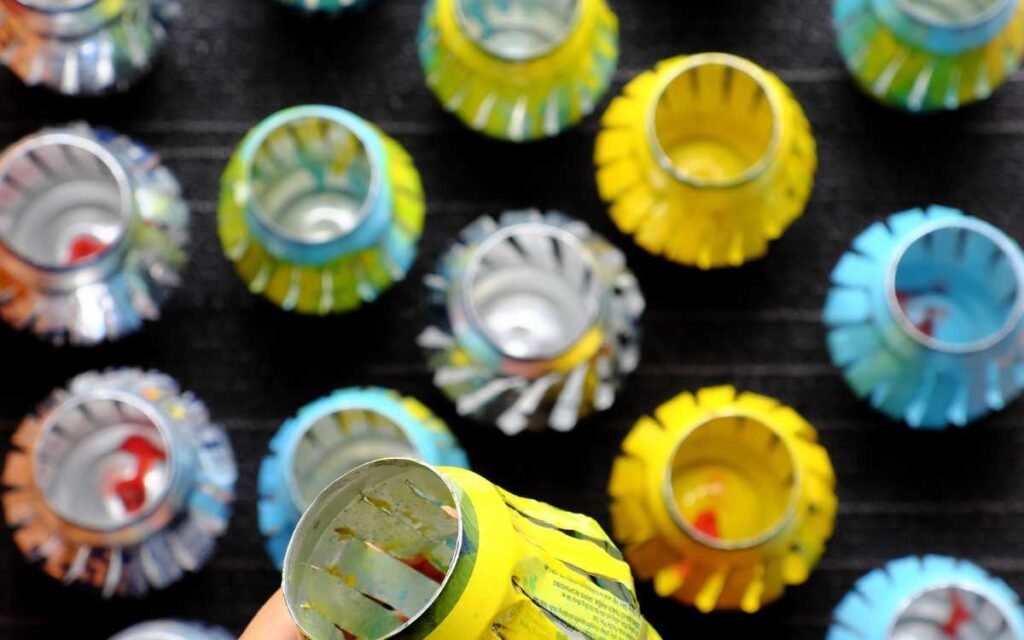
Introduction
Have you ever wondered, “Are paper lanterns bad for the environment?” If so, you’re in the right place. Let’s dive into this fascinating topic and explore everything from the biodegradability of lanterns to the environmental impact of those beautiful floating lights we often see during festivals.
Are Lanterns Biodegradable?

First things first, let’s talk about biodegradability. In simple terms, something is biodegradable if it can be broken down naturally by microorganisms. When it comes to paper lanterns, the answer isn’t straightforward.
Paper Components
- Paper: Most paper lanterns are made from rice paper, which is biodegradable. Under the right conditions, rice paper can decompose in a few weeks to a couple of months.
Non-Biodegradable Components
- Metal Wires: Unfortunately, many paper lanterns contain metal wires that support their structure. These wires do not biodegrade and can cause environmental harm.
- Plastic Parts: Some lanterns have plastic components, which can take hundreds of years to break down, adding to the growing problem of plastic pollution.
So, while the paper part of the lantern might break down, the metal and plastic parts do not, making them less environmentally friendly than they might seem at first glance.
Are Paper Lanterns Bad for the Environment?

Now that we know that not all parts of a paper lantern are biodegradable, let’s delve into their overall environmental impact.
Wildlife Hazards
When paper lanterns are released, they can travel long distances before landing. Once they hit the ground or water, they become potential hazards for wildlife. Animals can get entangled in the metal wires or ingest the plastic parts, leading to injuries or even death.
Fire Risks
Lanterns that use open flames pose significant fire risks. In 2013, a Chinese lantern caused a massive fire at the Smethwick plastic recycling plant in the UK. The fire took 200 firefighters and three days to extinguish (source: BBC.com). In the same year, the release of a single sky lantern in Washington resulted in a 500-acre wildfire, which took 100 firefighters to extinguish the flames.
In India, 15 people were severely injured when a sky lantern landed on a shop, causing four neighboring houses to burst into flames. Similarly, in South Carolina, a sky lantern landed on a dry bush and destroyed 800 acres of land. At the start of 2020, dozens of animals were killed at a zoo in the western German city of Krefeld due to a fire caused by Chinese sky lanterns set off for New Year’s Eve celebrations.
Pollution
As the lanterns fall back to earth, they contribute to litter. The metal and plastic components can take years to degrade, polluting both land and waterways. This pollution not only affects the beauty of our environment but also the health of ecosystems.
Are Paper Lanterns Environmentally Friendly?

Given the issues we’ve discussed, it’s clear that traditional paper lanterns have some serious environmental downsides. But what about alternatives? Are there more eco-friendly options available?
Eco-Friendly Alternatives
- Biodegradable Lanterns: Some manufacturers now offer fully biodegradable lanterns, made entirely from natural materials like bamboo and rice paper without any metal or plastic parts.
- LED Lanterns: Instead of using open flames, consider LED lanterns. These are reusable and don’t pose a fire risk.
- Tethered Lanterns: Another option is tethered lanterns, which are tied to a string, preventing them from floating away and causing environmental harm.
Lantern Festivals

Lantern festivals are magical events celebrated worldwide, from China’s Mid-Autumn Festival to Thailand’s Yi Peng Festival. These festivals are visually stunning and culturally significant, but they also have a considerable environmental footprint.
Cultural Significance
- China: The Lantern Festival marks the end of the Chinese New Year celebrations. It’s a time for families to come together and release lanterns as a symbol of letting go of the past and welcoming the future.
- Thailand: During Yi Peng, thousands of lanterns are released into the sky, creating a breathtaking spectacle. The festival is a time for making wishes and reflecting on life’s blessings.
Environmental Impact
While the cultural importance of these festivals is undeniable, their environmental impact is concerning. After the celebrations, thousands of lanterns fall back to earth, littering the landscape and posing risks to wildlife and human safety.
What Happens to Lanterns After They Are Released?

You might be wondering, what happens to all those lanterns once they disappear into the sky? Unfortunately, they don’t just vanish.
Landfall
Most lanterns eventually come back down, often far from where they were released. They can end up in forests, fields, rivers, and oceans, contributing to litter and pollution.
Wildlife and Habitat
As mentioned earlier, fallen lanterns pose significant threats to wildlife. Birds, fish, and other animals can become entangled or ingest harmful materials, leading to injury or death.
Cleanup Efforts
Some communities organize cleanup efforts after festivals to collect fallen lanterns and minimize environmental damage. However, these efforts are often limited and can’t completely mitigate the impact.
How to Make Eco-Friendly Lanterns

If you love the idea of lanterns but are concerned about their environmental impact, why not try making your own eco-friendly versions? Here’s how you can do it:
Materials You’ll Need
- Bamboo Sticks: Use bamboo instead of metal for the frame.
- Rice Paper: Stick to biodegradable rice paper for the lantern body.
- Natural Adhesives: Use natural glues like rice paste instead of synthetic ones.
- LED Lights: Opt for small LED lights instead of open flames.
Steps
- Construct the Frame: Use bamboo sticks to create a sturdy frame.
- Attach the Paper: Wrap the rice paper around the frame, securing it with natural adhesive.
- Add the Light: Place an LED light inside the lantern. This will give you a beautiful glow without the risk of fire.
- Tether Your Lantern: Attach a string to your lantern to ensure it doesn’t float away and become litter.
Benefits
- Biodegradable: These materials will break down naturally, reducing environmental harm.
- Safe: Using LED lights eliminates the fire risk associated with traditional lanterns.
- Reusable: With proper care, you can use these lanterns multiple times, reducing waste.
Bottom Line
So, are paper lanterns bad for the environment? The answer is a bit complicated. While the paper itself is often biodegradable, the metal and plastic components can cause significant environmental harm. Traditional lanterns also pose risks to wildlife and contribute to pollution and fire hazards.
However, there are ways to enjoy lanterns more sustainably. Opting for fully biodegradable lanterns, using LED lights, and making your own eco-friendly versions are all excellent options.
Next time you plan to release a lantern, consider these alternatives and make a choice that’s kinder to our planet. Let’s enjoy the beauty of lanterns while also protecting the environment.
And remember, small changes can make a big difference. Together, we can create a more sustainable future, one lantern at a time.





